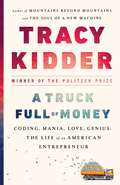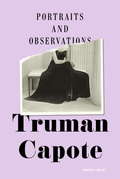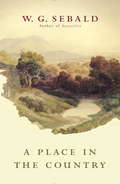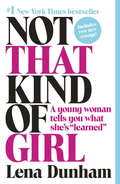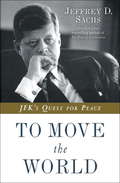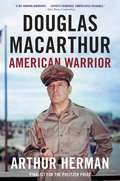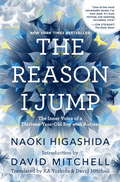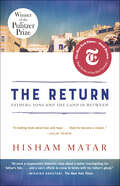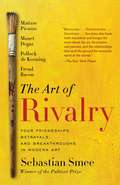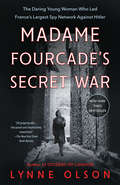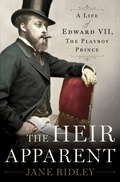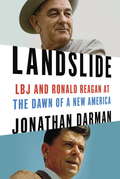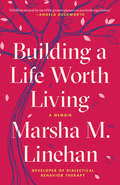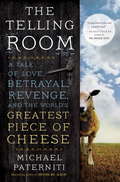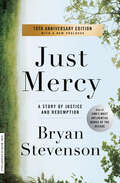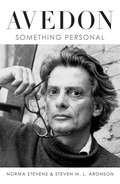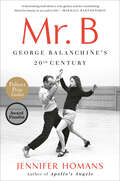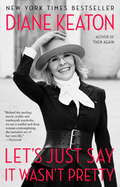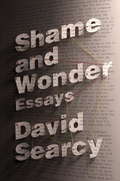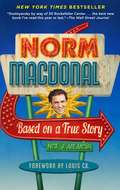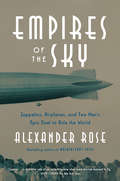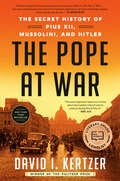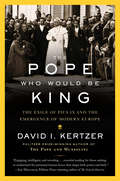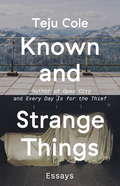- Table View
- List View
A Truck Full of Money: One Man's Quest to Recover from Great Success
by Tracy Kidder"A perfectly executed, exquisitely reported parable of the Internet age and the wild, mad adventure that is start-up culture."--Charles Duhigg Fortune, mania, genius, philanthropy--the bestselling author of Mountains Beyond Mountains gives us the inspiring story of Paul English, the founder of Kayak.com and Lola. Tracy Kidder, the "master of the nonfiction narrative" (The Baltimore Sun) and author of the bestselling classic The Soul of a New Machine, now tells the story of Paul English, a kinetic and unconventional inventor and entrepreneur, who as a boy rebelled against authority. Growing up in working-class Boston, English discovers a medium for his talents the first time he sees a computer. As a young man, despite suffering from what would eventually be diagnosed as bipolar disorder, he begins his pilgrim's journey through the ups and downs in the brave new world of computers. Relating to the Internet as if it's an extension of his own mind, he discovers that he has a talent for conceiving innovative enterprises and building teams that can develop them, becoming "a Pied Piper" of geeks. His innovative management style, success, and innate sense of fair play inspire intense loyalty. Early on, one colleague observes: "Someday this boy's going to get hit by a truck full of money, and I'm going to be standing beside him." Yet when English does indeed make a fortune, when the travel website Kayak is sold for almost two billion dollars--the first thing he thinks about is how to give the money away: "What else would you do with it?" The second thing he thinks is, What's next? With the power of a consummate storyteller, Tracy Kidder casts a fresh, critical, and often humorous eye on the way new ideas and new money are reshaping our culture and the world. A Truck Full of Money is a mesmerizing portrait of an irresistibly endearing man who is indefatigable, original, and as unpredictable as America itself. Advance praise for A Truck Full of Money"A perfectly executed, exquisitely reported parable of the Internet age, and the wild, mad adventure that is start-up culture."--Charles Duhigg "A Truck Full of Money brings us into unknown spaces of the complex workings of the mind--of a brilliant software engineer, of this new decade, of the brutal/fast business of technology, of stunning privilege, and of one man's efforts to put his fortune to humane use."--Adrian Nicole LeBlanc"The story of [an] entrepreneur's remarkable life [and] the new American economy and the technological world that built it. More engrossing work from a gifted practitioner of narrative nonfiction."--Kirkus ReviewsFrom the Hardcover edition.
Portraits and Observations: The Essays Of Truman Capote
by Truman CapotePerhaps no twentieth century writer was so observant and elegant a chronicler of his times as Truman Capote. Whether he was profiling the rich and famous or creating indelible word-pictures of events and places near and far, Capote's eye for detail and dazzling style made his reportage and commentary undeniable triumphs of the form. Portraits and Observations is the first volume devoted solely to all the essays ever published by this most beloved of writers. From his travel sketches of Brooklyn, New Orleans, and Hollywood, written when he was twenty-two, to meditations about fame, fortune, and the writer's art at the peak of his career, to the brief works penned during the isolated denouement of his life, these essays provide an essential window into mid-twentieth-century America as offered by one of its canniest observers. Included are such celebrated masterpieces of narrative nonfiction as "The Muses Are Heard" and the short nonfiction novel "Handcarved Coffins," as well as many long-out-of-print essays, including portraits of Isak Dinesen, Mae West, Marcel Duchamp, Humphrey Bogart, and Marilyn Monroe. Among the highlights are "Ghosts in Sunlight: The Filming of In Cold Blood, "Preface to Music for Chameleons, in which Capote candidly recounts the highs and lows of his long career, and a playful self-portrait in the form of an imaginary self-interview. The book concludes with the author's last written words, composed the day before his death in 1984, the recently discovered"Remembering Willa Cather," Capote's touching recollection of his encounter with the author when he was a young man at the dawn of his career. Portraits and Observations puts on display the full spectrum of Truman Capote's brilliance. Certainly, Capote was, as Somerset Maugham famously called him, "a stylist of the first quality." But as the pieces gathered here remind us, he was also an artist of remarkable substance.
A Place in the Country
by W. G. Sebald Jo CatlingA Place in the Country is W. G. Sebald's meditation on the six artists and writers who shaped his creative mind--and the last of this great writer's major works to be translated into English. This beautiful hardcover edition, with a full-cloth case, includes more than 40 pieces of art and 6 full-color gatefolds, all originally selected and laid out by W. G. Sebald.This extraordinary collection of interlinked essays about place, memory, and creativity captures the inner worlds of five authors and one painter. In his masterly and mysterious style--part critical essay, part memoir--Sebald weaves their lives and art with his own migrations and rise in the literary world. Here are people gifted with talent and courage yet in some cases cursed by fragile and unstable natures, working in countries inhospitable or even hostile to them. Jean-Jacques Rousseau is conjured on the verge of physical and mental exhaustion, hiding from his detractors on the island of St. Pierre, where two centuries later Sebald took rooms adjacent to his. Eighteenth-century author Johann Peter Hebel is remembered for his exquisite and delicate nature writing, expressing the eternal balance of both the outside world and human emotions. Writer Gottfried Keller, best known for his 1850 novel Green Henry, is praised for his prescient insights into a Germany where "the gap between self-interest and the common good was growing ever wider." Sebald compassionately re-creates the ordeals of Eduard Mörike, the German Romantic poet beset by mood swings, depression, and fainting spells in an increasingly shallow society, and Robert Walser, the institutionalized author whose nearly indecipherable scrawls seemed an attempt to "duck down below the level of language and obliterate himself" (and whose physical appearance and year of death mirrored those of Sebald's grandfather). Finally, Sebald spies a cognizance of death's inevitability in painter Jan Peter Tripp's lovingly exact reproductions of life. Featuring the same kinds of suggestive and unexplained illustrations that appear in his masterworks Austerlitz and The Rings of Saturn, and translated by Sebald's colleague Jo Catling, A Place in the Country is Sebald's unforgettable self-portrait as seen through the experiences of others, a glimpse of his own ghosts alongside those of the men who influenced him. It is an essential addition to his stunning body of work.Named One of the Top 10 Literary Biographies, Essays & Criticism of the Season by Publishers Weekly "In Sebald's writing, everything is connected, everything webbed together by the unseen threads of history, or chance, or fate, or death. The scholarly craft of gathering scattered sources and weaving them into a coherent whole is transformed here into something beautiful and unsettling, elevated into an art of the uncanny--an art that was, in the end, Sebald's strange and inscrutable gift."--Slate "Reading [A Place in the Country is] like going for a walk with a beautifully talented, deeply passionate novelist from Mars."--New York "Out of exquisitely attuned feeling for the past, Sebald fashioned an entirely new form of literature. I've read his books countless times trying to understand how he did it. In the end, I can only say that he practiced a kind of magic born out of almost supernatural sensitivity. A Place in the Country extends the too-short time we were given in his company."--Nicole KraussFrom the Hardcover edition.
Not That Kind of Girl
by Lena DunhamFor readers of Nora Ephron, Tina Fey, and David Sedaris, this hilarious, wise, and fiercely candid collection of personal essays establishes Lena Dunham--the acclaimed creator, producer, and star of HBO's Girls--as one of the most original young talents writing today. In Not That Kind of Girl, Dunham illuminates the experiences that are part of making one's way in the world: falling in love, feeling alone, being ten pounds overweight despite eating only health food, having to prove yourself in a room full of men twice your age, finding true love, and most of all, having the guts to believe that your story is one that deserves to be told. "Take My Virginity (No Really, Take It)" is the account of Dunham's first time, and how her expectations of sex didn't quite live up to the actual event ("No floodgate had been opened, no vault of true womanhood unlocked"); "Girls & Jerks" explores her former attraction to less-than-nice guys--guys who had perfected the "dynamic of disrespect" she found so intriguing; "Is This Even Real?" is a meditation on her lifelong obsession with death and dying--what she calls her "genetically predestined morbidity." And in "I Didn't F*** Them, but They Yelled at Me," she imagines the tell-all she will write when she is eighty and past caring, able to reflect honestly on the sexism and condescension she has encountered in Hollywood, where women are "treated like the paper thingies that protect glasses in hotel bathrooms--necessary but infinitely disposable." Exuberant, moving, and keenly observed, Not That Kind of Girl is a series of dispatches from the frontlines of the struggle that is growing up. "I'm already predicting my future shame at thinking I had anything to offer you," Dunham writes. "But if I can take what I've learned and make one menial job easier for you, or prevent you from having the kind of sex where you feel you must keep your sneakers on in case you want to run away during the act, then every misstep of mine will have been worthwhile."Praise for Not That Kind of Girl "It's not Lena Dunham's candor that makes me gasp. Rather, it's her writing--which is full of surprises where you least expect them. A fine, subversive book."--David Sedaris "Always funny, sometimes wrenching, these essays are a testament to the creative wonder that is Lena Dunham."--Judy Blume "Dunham's writing is just as smart, honest, sophisticated, dangerous, and charming as her work on Girls. Its essential quality is a kind of joyful super-awareness: of herself, the world, the human. Reading her makes you glad to be in the world, and glad that she's in it with you."--George Saunders "Very few women have become famous for being who they actually are, nuanced and imperfect. When honesty happens, it's usually couched in self-ridicule or self-help. Dunham doesn't apologize like that--she simply tells her story as if it might be interesting. Not That Kind of Girl is hilarious, artful, and staggeringly intimate; I read it shivering with recognition."--Miranda July "This book should be required reading for anyone who thinks they understand the experience of being a young woman in our culture. I thought I knew the author rather well, and I found many (not altogether welcome) surprises."--Carroll DunhamFrom the Hardcover edition.
To Move the World
by Jeffrey D. SachsAn inspiring look at the historic foreign policy triumph of John F. Kennedy's presidency--the crusade for world peace that consumed his final year in office--by the New York Times bestselling author of The Price of Civilization, Common Wealth, and The End of Poverty The last great campaign of John F. Kennedy's life was not the battle for reelection he did not live to wage, but the struggle for a sustainable peace with the Soviet Union. To Move the World recalls the extraordinary days from October 1962 to September 1963, when JFK marshaled the power of oratory and his remarkable political skills to establish more peaceful relations with the Soviet Union and a dramatic slowdown in the proliferation of nuclear arms. Kennedy and his Soviet counterpart, Nikita Khrushchev, led their nations during the Cuban Missile Crisis, when the two superpowers came eyeball to eyeball at the nuclear abyss. This near-death experience shook both leaders deeply. Jeffrey D. Sachs shows how Kennedy emerged from the Missile crisis with the determination and prodigious skills to forge a new and less threatening direction for the world. Together, he and Khrushchev would pull the world away from the nuclear precipice, charting a path for future peacemakers to follow. During his final year in office, Kennedy gave a series of speeches in which he pushed back against the momentum of the Cold War to persuade the world that peace with the Soviets was possible. The oratorical high point came on June 10, 1963, when Kennedy delivered the most important foreign policy speech of the modern presidency. He argued against the prevailing pessimism that viewed humanity as doomed by forces beyond its control. Mankind, argued Kennedy, could bring a new peace into reality through a bold vision combined with concrete and practical measures. Achieving the first of those measures in the summer of 1963, the Partial Nuclear Test Ban Treaty, required more than just speechmaking, however. Kennedy had to use his great gifts of persuasion on multiple fronts--with fractious allies, hawkish Republican congressmen, dubious members of his own administration, and the American and world public--to persuade a skeptical world that cooperation between the superpowers was realistic and necessary. Sachs shows how Kennedy campaigned for his vision and opened the eyes of the American people and the world to the possibilities of peace. Featuring the full text of JFK's speeches from this period, as well as striking photographs, To Move the World gives us a startlingly fresh perspective on Kennedy's presidency and a model for strong leadership and problem solving in our time. Praise for Jeffrey D. Sachs's The Price of Civilization Named One of the Best Books of the Year by The Guardian and Publishers Weekly "Half a century ago J. K. Galbraith's The Affluent Society changed the political consciousness of a generation. . . . Jeffrey Sachs's new book is a landmark in this great and essentially American tradition."--The Spectator "Succinct, humane, and politically astute . . . Sachs lays out a detailed path to reform, regulation, and recovery."--The American Prospect "Stimulating . . . a must-read for every concerned citizen . . . [a] hard-hitting brief for a humane economy."--Publishers Weekly (starred review)
Douglas MacArthur: American Warrior
by Arthur HermanA new, definitive life of an American icon, the visionary general who led American forces through three wars and foresaw his nation’s great geopolitical shift toward the Pacific Rim—from the Pulitzer Prize finalist and bestselling author of Gandhi & Churchill Douglas MacArthur was arguably the last American public figure to be worshiped unreservedly as a national hero, the last military figure to conjure up the romantic stirrings once evoked by George Armstrong Custer and Robert E. Lee. But he was also one of America’s most divisive figures, a man whose entire career was steeped in controversy. Was he an avatar or an anachronism, a brilliant strategist or a vainglorious mountebank? Drawing on a wealth of new sources, Arthur Herman delivers a powerhouse biography that peels back the layers of myth—both good and bad—and exposes the marrow of the man beneath. MacArthur’s life spans the emergence of the United States Army as a global fighting force. Its history is to a great degree his story. The son of a Civil War hero, he led American troops in three monumental conflicts—World War I, World War II, and the Korean War. Born four years after Little Bighorn, he died just as American forces began deploying in Vietnam. Herman’s magisterial book spans the full arc of MacArthur’s journey, from his elevation to major general at thirty-eight through his tenure as superintendent of West Point, field marshal of the Philippines, supreme ruler of postwar Japan, and beyond. More than any previous biographer, Herman shows how MacArthur’s strategic vision helped shape several decades of U.S. foreign policy. Alone among his peers, he foresaw the shift away from Europe, becoming the prophet of America’s destiny in the Pacific Rim. Here, too, is a vivid portrait of a man whose grandiose vision of his own destiny won him enemies as well as acolytes. MacArthur was one of the first military heroes to cultivate his own public persona—the swashbuckling commander outfitted with Ray-Ban sunglasses, riding crop, and corncob pipe. Repeatedly spared from being killed in battle—his soldiers nicknamed him “Bullet Proof”—he had a strong sense of divine mission. “Mac” was a man possessed, in the words of one of his contemporaries, of a “supreme and almost mystical faith that he could not fail.” Yet when he did, it was on an epic scale. His willingness to defy both civilian and military authority was, Herman shows, a lifelong trait—and it would become his undoing. Tellingly, MacArthur once observed, “Sometimes it is the order one disobeys that makes one famous.” To capture the life of such an outsize figure in one volume is no small achievement. With Douglas MacArthur, Arthur Herman has set a new standard for untangling the legacy of this American legend.
The Reason I Jump: The Inner Voice Of A Thirteen-year-old Boy With Autism
by David Mitchell Naoki Higashida Ka YoshidaYou've never read a book like The Reason I Jump. Written by Naoki Higashida, a very smart, very self-aware, and very charming thirteen-year-old boy with autism, it is a one-of-a-kind memoir that demonstrates how an autistic mind thinks, feels, perceives, and responds in ways few of us can imagine. Parents and family members who never thought they could get inside the head of their autistic loved one at last have a way to break through to the curious, subtle, and complex life within. <p><p> Using an alphabet grid to painstakingly construct words, sentences, and thoughts that he is unable to speak out loud, Naoki answers even the most delicate questions that people want to know. Questions such as: "Why do people with autism talk so loudly and weirdly?" "Why do you line up your toy cars and blocks?" "Why don't you make eye contact when you're talking?" and "What's the reason you jump?" (Naoki's answer: "When I'm jumping, it's as if my feelings are going upward to the sky.") With disarming honesty and a generous heart, Naoki shares his unique point of view on not only autism but life itself. His insights--into the mystery of words, the wonders of laughter, and the elusiveness of memory--are so startling, so strange, and so powerful that you will never look at the world the same way again. <p> In his introduction, bestselling novelist David Mitchell writes that Naoki's words allowed him to feel, for the first time, as if his own autistic child was explaining what was happening in his mind. "It is no exaggeration to say that The Reason I Jump allowed me to round a corner in our relationship." This translation was a labor of love by David and his wife, KA Yoshida, so they'd be able to share that feeling with friends, the wider autism community, and beyond. Naoki's book, in its beauty, truthfulness, and simplicity, is a gift to be shared.
The Return (Pulitzer Prize Winner): Fathers, Sons and the Land in Between
by Hisham MatarWINNER OF THE PULITZER PRIZE • The acclaimed memoir about fathers and sons, a legacy of loss, and, ultimately, healing—one of The New York Times Book Review&’s ten best books of the year, winner of the PEN/Jean Stein Book Award, and a finalist for the National Book Critics Circle Award and the Los Angeles Times Book PrizeOne of the New York Times&’s 100 Best Books of the 21st Century When Hisham Matar was a nineteen-year-old university student in England, his father went missing under mysterious circumstances. Hisham would never see him again, but he never gave up hope that his father might still be alive. Twenty-two years later, he returned to his native Libya in search of the truth behind his father&’s disappearance. The Return is the story of what he found there. The Pulitzer Prize citation hailed The Return as &“a first-person elegy for home and father.&” Transforming his personal quest for answers into a brilliantly told universal tale of hope and resilience, Matar has given us an unforgettable work with a powerful human question at its core: How does one go on living in the face of unthinkable loss?NAMED ONE OF THE BEST BOOKS OF THE YEAR BY Michiko Kakutani, The New York Times • The Washington Post • The Guardian • Financial Times&“A tale of mighty love, loyalty and courage. It simply must be read.&”—The Spectator (U.K.) &“Wise and agonizing and thrilling to read.&”—Zadie Smith &“[An] eloquent memoir . . . at once a suspenseful detective story about a writer investigating his father&’s fate . . . and a son&’s efforts to come to terms with his father&’s ghost, who has haunted more than half his life by his absence.&”—Michiko Kakutani, The New York Times &“This outstanding book . . . roves back and forth in time with a freedom that conceals the intricate precision of its art.&”—The Wall Street Journal &“Truly remarkable . . . a book with a profound faith in the consolations of storytelling . . . a testament to [Matar&’s] father, his family and his country.&”—The Daily Telegraph (U.K.) &“The Return is a riveting book about love and hope, but it is also a moving meditation on grief and loss. . . . Likely to become a classic.&”—Colm Tóibín &“Matar&’s evocative writing and his early traumas call to mind Vladimir Nabokov.&”—The Washington Post &“Utterly riveting.&”—The Boston Globe &“A moving, unflinching memoir of a family torn apart.&”—Kazuo Ishiguro, The Guardian &“Beautiful . . . The Return, for all the questions it cannot answer, leaves a deep emotional imprint.&”—Newsday &“A masterful memoir, a searing meditation on loss, exile, grief, guilt, belonging, and above all, family. It is, as well, a study of the shaping—and breaking—of the bonds between fathers and sons. . . . This is writing of the highest quality.&”—The Sunday Times (U.K.)
The Art of Rivalry: Four Friendships, Betrayals, and Breakthroughs in Modern Art
by Sebastian SmeePulitzer Prize–winning art critic Sebastian Smee tells the fascinating story of four pairs of artists—Manet and Degas, Picasso and Matisse, Pollock and de Kooning, Freud and Bacon—whose fraught, competitive friendships spurred them to new creative heights. Rivalry is at the heart of some of the most famous and fruitful relationships in history. The Art of Rivalry follows eight celebrated artists, each linked to a counterpart by friendship, admiration, envy, and ambition. All eight are household names today. But to achieve what they did, each needed the influence of a contemporary—one who was equally ambitious but possessed sharply contrasting strengths and weaknesses. Edouard Manet and Edgar Degas were close associates whose personal bond frayed after Degas painted a portrait of Manet and his wife. Henri Matisse and Pablo Picasso swapped paintings, ideas, and influences as they jostled for the support of collectors like Leo and Gertrude Stein and vied for the leadership of a new avant-garde. Jackson Pollock’s uninhibited style of “action painting” triggered a breakthrough in the work of his older rival, Willem de Kooning. After Pollock’s sudden death in a car crash, de Kooning assumed Pollock's mantle and became romantically involved with his late friend’s mistress. Lucian Freud and Francis Bacon met in the early 1950s, when Bacon was being hailed as Britain’s most exciting new painter and Freud was working in relative obscurity. Their intense but asymmetrical friendship came to a head when Freud painted a portrait of Bacon, which was later stolen. Each of these relationships culminated in an early flashpoint, a rupture in a budding intimacy that was both a betrayal and a trigger for great innovation. Writing with the same exuberant wit and psychological insight that earned him a Pulitzer Prize for art criticism, Sebastian Smee explores here the way that coming into one’s own as an artist—finding one’s voice—almost always involves willfully breaking away from some intimate’s expectations of who you are or ought to be.
Madame Fourcade's Secret War: The Daring Young Woman Who Led France's Largest Spy Network Against Hitler
by Lynne OlsonThe little-known true story of Marie-Madeleine Fourcade, the woman who headed the largest spy network in occupied France during World War II, from the bestselling author of Citizens of London and Last Hope Island <P><P> In 1941 a thirty-one-year-old Frenchwoman, a young mother born to privilege and known for her beauty and glamour, became the leader of a vast intelligence organization—the only woman to serve as a chef de résistance during the war. <P><P>Strong-willed, independent, and a lifelong rebel against her country’s conservative, patriarchal society, Marie-Madeleine Fourcade was temperamentally made for the job. Her group’s name was Alliance, but the Gestapo dubbed it Noah’s Ark because its agents used the names of animals as their aliases. The name Marie-Madeleine chose for herself was Hedgehog: a tough little animal, unthreatening in appearance, that, as a colleague of hers put it, “even a lion would hesitate to bite.” <P><P>No other French spy network lasted as long or supplied as much crucial intelligence—including providing American and British military commanders with a 55-foot-long map of the beaches and roads on which the Allies would land on D-Day—as Alliance. <P><P>The Gestapo pursued them relentlessly, capturing, torturing, and executing hundreds of its three thousand agents, including Fourcade’s own lover and many of her key spies. <P><P>Although Fourcade, the mother of two young children, moved her headquarters every few weeks, constantly changing her hair color, clothing, and identity, she was captured twice by the Nazis. <P><P>Both times she managed to escape—once by slipping naked through the bars of her jail cell—and continued to hold her network together even as it repeatedly threatened to crumble around her. <P><P>Now, in this dramatic account of the war that split France in two and forced its people to live side by side with their hated German occupiers, Lynne Olson tells the fascinating story of a woman who stood up for her nation, her fellow citizens, and herself. <P><b>A New York Times Bestseller</b>
The Heir Apparent: A Life of Edward VII, the Playboy Prince
by Jane RidleyThis richly entertaining biography chronicles the eventful life of Queen Victoria's firstborn son, the quintessential black sheep of Buckingham Palace, who matured into as wise and effective a monarch as Britain has ever seen. Granted unprecedented access to the royal archives, noted scholar Jane Ridley draws on numerous primary sources to paint a vivid portrait of the man and the age to which he gave his name. Born Prince Albert Edward, and known to familiars as "Bertie," the future King Edward VII had a well-earned reputation for debauchery. A notorious gambler, glutton, and womanizer, he preferred the company of wastrels and courtesans to the dreary life of the Victorian court. His own mother considered him a lazy halfwit, temperamentally unfit to succeed her. When he ascended to the throne in 1901, at age fifty-nine, expectations were low. Yet by the time he died nine years later, he had proven himself a deft diplomat, hardworking head of state, and the architect of Britain's modern constitutional monarchy. Jane Ridley's colorful biography rescues the man once derided as "Edward the Caresser" from the clutches of his historical detractors. Excerpts from letters and diaries shed new light on Bertie's long power struggle with Queen Victoria, illuminating one of the most emotionally fraught mother-son relationships in history. Considerable attention is paid to King Edward's campaign of personal diplomacy abroad and his valiant efforts to reform the political system at home. Separating truth from legend, Ridley also explores Bertie's relationships with the women in his life. Their ranks comprised his wife, the stunning Danish princess Alexandra, along with some of the great beauties of the era: the actress Lillie Langtry, longtime "royal mistress" Alice Keppel (the great-grandmother of Camilla Parker Bowles), and Lady Randolph Churchill, mother of Winston. Edward VII waited nearly six decades for his chance to rule, then did so with considerable panache and aplomb. A magnificent life of an unexpectedly impressive king, The Heir Apparent documents the remarkable transformation of a man--and a monarchy--at the dawn of a new century.Named one of the fall's "Top 10" Most Anticipated Works of History by Publishers WeeklyPraise for The Heir Apparent "[A] marvelously rich biography of Edward VII . . . Readers both general and specialized will delight in Ridley's work; it raises the bar for royal biographies to come."--Publishers Weekly (starred review) "A highly readable, definitive biography of Queen Victoria's son, the 'black sheep of Buckingham Palace,' who matured into an effective monarch . . . [A] top-notch life of the king . . . There is no shortage of biographies of Edward VII, but this thick, lucid and lively history deserves pride of place on the shelf."--Kirkus Reviews (starred review) British praise for The Heir Apparent "[A] splendid new biography."--The Guardian "Brilliantly entertaining . . . With this richly detailed, impeccably researched book . . . Ridley has achieved a landmark royal biography."--The Sunday Telegraph "Ridley has written a marvellous biography. Her book is racy and pacy, filled with delicious descriptions of grand Edwardian shooting parties, cutting-edge fashion and, of course, a string of beautiful society women. But she is never trivial, and nor is her Bertie."--The Mail on SundayFrom the Hardcover edition.
Landslide
by Jonathan DarmanIn politics, the man who takes the highest spot after a landslide is not standing on solid ground. In this riveting work of narrative nonfiction, Jonathan Darman tells the story of two giants of American politics, Lyndon Johnson and Ronald Reagan, and shows how, from 1963 to 1966, these two men--the same age, and driven by the same heroic ambitions--changed American politics forever. The liberal and the conservative. The deal-making arm twister and the cool communicator. The Texas rancher and the Hollywood star. Opposites in politics and style, Johnson and Reagan shared a defining impulse: to set forth a grand story of America, a story in which he could be the hero. In the tumultuous days after the Kennedy assassination, Johnson and Reagan each, in turn, seized the chance to offer the country a new vision for the future. Bringing to life their vivid personalities and the anxious mood of America in a radically transformative time, Darman shows how, in promising the impossible, Johnson and Reagan jointly dismantled the long American tradition of consensus politics and ushered in a new era of fracture. History comes to life in Darman's vivid, fly-on-the wall storytelling. Even as Johnson publicly revels in his triumphs, we see him grow obsessed with dark forces he believes are out to destroy him, while his wife, Lady Bird, urges her husband to put aside his paranoia and see the world as it really is. And as the war in Vietnam threatens to overtake his presidency, we witness Johnson desperately struggling to compensate with ever more extravagant promises for his Great Society. On the other side of the country, Ronald Reagan, a fading actor years removed from his Hollywood glory, gradually turns toward a new career in California politics. We watch him delivering speeches to crowds who are desperate for a new leader. And we see him wielding his well-honed instinct for timing, waiting for Johnson's majestic promises to prove empty before he steps back into the spotlight, on his long journey toward the presidency. From Johnson's election in 1964, the greatest popular-vote landslide in American history, to the pivotal 1966 midterms, when Reagan burst forth onto the national stage, Landslide brings alive a country transformed--by riots, protests, the rise of television, the shattering of consensus--and the two towering personalities whose choices in those moments would reverberate through the country for decades to come. Advance praise for Landslide "Jonathan Darman turns fresh eyes on two political giants of the late twentieth century, LBJ and Ronald Reagan. Landslide is full of surprises and new insights on these two presidents, and is written with flair. A delicious feast of a read."--Lesley Stahl"Masterly . . . In taking us back to a moment in American history when politics worked, Jonathan Darman provides a resonant reality check on a system that now seems all too dysfunctional. The intertwined stories of Lyndon Johnson and Ronald Reagan offer us a window on the intrinsic give-and-take that makes governing possible. Anyone who cares about politics, biography, and current affairs will find this a delightful and illuminating book."--Jon Meacham, author of Thomas Jefferson: The Art of Power "Jonathan Darman writes with power, sweep, vivacity, and humor. He is at once a gifted storyteller, a keen judge of character, and a genie of political insight. He gives us two giants, Lyndon Johnson and Ronald Reagan, in all their glory and human vanity, and takes us on a breathtaking thousand-day ride."--Evan Thomas, author of Ike's Bluff and The Wise MenFrom the Hardcover edition.
Building a Life Worth Living: A Memoir
by Marsha M. LinehanMarsha Linehan tells the story of her journey from suicidal teenager to world-renowned developer of the life-saving behavioral therapy DBT, using her own struggle to develop life skills for others.&“This book is a victory on both sides of the page.&”—Gloria Steinem&“Are you one of us?&” a patient once asked Marsha Linehan, the world-renowned psychologist who developed dialectical behavior therapy. &“Because if you were, it would give all of us so much hope.&” Over the years, DBT had saved the lives of countless people fighting depression and suicidal thoughts, but Linehan had never revealed that her pioneering work was inspired by her own desperate struggles as a young woman. Only when she received this question did she finally decide to tell her story.In this remarkable and inspiring memoir, Linehan describes how, when she was eighteen years old, she began an abrupt downward spiral from popular teenager to suicidal young woman. After several miserable years in a psychiatric institute, Linehan made a vow that if she could get out of emotional hell, she would try to find a way to help others get out of hell too, and to build a life worth living. She went on to put herself through night school and college, living at the YWCA and often scraping together spare change to buy food. She went on to get her PhD in psychology, specializing in behavior therapy. In the 1980s, she achieved a breakthrough when she developed Dialectical Behavioral Therapy, a therapeutic approach that combines acceptance of the self and ways to change. Linehan included mindfulness as a key component in therapy treatment, along with original and specific life-skill techniques. She says, "You can't think yourself into new ways of acting; you can only act yourself into new ways of thinking."Throughout her extraordinary scientific career, Marsha Linehan remained a woman of deep spirituality. Her powerful and moving story is one of faith and perseverance. Linehan shows, in Building a Life Worth Living, how the principles of DBT really work—and how, using her life skills and techniques, people can build lives worth living.
The Telling Room: A Tale of Love, Betrayal, Revenge, and the World's Greatest Piece of Cheese
by Michael PaternitiIn the picturesque village of Guzmán, Spain, in a cave dug into a hillside on the edge of town, an ancient door leads to a cramped limestone chamber known as "the telling room." Containing nothing but a wooden table and two benches, this is where villagers have gathered for centuries to share their stories and secrets--usually accompanied by copious amounts of wine. It was here, in the summer of 2000, that Michael Paterniti found himself listening to a larger-than-life Spanish cheesemaker named Ambrosio Molinos de las Heras as he spun an odd and compelling tale about a piece of cheese. An unusual piece of cheese. Made from an old family recipe, Ambrosio's cheese was reputed to be among the finest in the world, and was said to hold mystical qualities. Eating it, some claimed, conjured long-lost memories. But then, Ambrosio said, things had gone horribly wrong. . . . By the time the two men exited the telling room that evening, Paterniti was hooked. Soon he was fully embroiled in village life, relocating his young family to Guzmán in order to chase the truth about this cheese and explore the fairy tale-like place where the villagers conversed with farm animals, lived by an ancient Castilian code of honor, and made their wine and food by hand, from the grapes growing on a nearby hill and the flocks of sheep floating over the Meseta. What Paterniti ultimately discovers there in the highlands of Castile is nothing like the idyllic slow-food fable he first imagined. Instead, he's sucked into the heart of an unfolding mystery, a blood feud that includes accusations of betrayal and theft, death threats, and a murder plot. As the village begins to spill its long-held secrets, Paterniti finds himself implicated in the very story he is writing. Equal parts mystery and memoir, travelogue and history, The Telling Room is an astonishing work of literary nonfiction by one of our most accomplished storytellers. A moving exploration of happiness, friendship, and betrayal, The Telling Room introduces us to Ambrosio Molinos de las Heras, an unforgettable real-life literary hero, while also holding a mirror up to the world, fully alive to the power of stories that define and sustain us.Advance praise for The Telling Room "For my money, Paterniti is one of the most expansive and joyful writers around--big-hearted and humane and funny. This book is a wild and amazing ride."--George Saunders, author of Tenth of December"Elegant, strange, funny, and insightful, The Telling Room is a marvelous tale and a joyful read, a trip into a world peopled by some of the most remarkable characters--and, yes, cheese--in memory."--Susan Orlean, author of The Orchid Thief "The list of writers I would read even if they were to write about a piece of cheese has always been short, but it includes Michael Paterniti. He has proved here that if you love something enough and pay a passionate enough attention to it, the whole world can become present in it. That's true of both the cheese and the book."--John Jeremiah Sullivan, author of Pulphead"An amazing achievement, The Telling Room is an inspired, masterly epic that expands and refigures the parameters of the storyteller's art."--Wells Tower, author of Everything Ravaged, Everything BurnedFrom the Hardcover edition.
Just Mercy: A Story of Justice and Redemption (One World Essentials)
by Bryan Stevenson#1 NEW YORK TIMES BESTSELLER • NOW A MAJOR MOTION PICTURE STARRING MICHAEL B. JORDAN AND JAMIE FOXX • A powerful true story about the potential for mercy to redeem us, and a clarion call to fix our broken system of justice—from one of the most brilliant and influential lawyers of our time. &“[Bryan Stevenson&’s] dedication to fighting for justice and equality has inspired me and many others and made a lasting impact on our country.&”—John LegendNAMED ONE OF THE MOST INFLUENTIAL BOOKS OF THE DECADE BY CNN • Named One of the Best Books of the Year by The New York Times • The Washington Post • The Boston Globe • The Seattle Times • Esquire • Time Bryan Stevenson was a young lawyer when he founded the Equal Justice Initiative, a legal practice dedicated to defending those most desperate and in need: the poor, the wrongly condemned, and women and children trapped in the farthest reaches of our criminal justice system. One of his first cases was that of Walter McMillian, a young man who was sentenced to die for a notorious murder he insisted he didn&’t commit. The case drew Bryan into a tangle of conspiracy, political machination, and legal brinksmanship—and transformed his understanding of mercy and justice forever. Just Mercy is at once an unforgettable account of an idealistic, gifted young lawyer&’s coming of age, a moving window into the lives of those he has defended, and an inspiring argument for compassion in the pursuit of true justice.Winner of the Carnegie Medal for Excellence in Nonfiction • Winner of the NAACP Image Award for Nonfiction • Winner of a Books for a Better Life Award • Finalist for the Los Angeles Times Book Prize • Finalist for the Kirkus Reviews Prize • An American Library Association Notable Book&“Every bit as moving as To Kill a Mockingbird, and in some ways more so . . . a searing indictment of American criminal justice and a stirring testament to the salvation that fighting for the vulnerable sometimes yields.&”—David Cole, The New York Review of Books &“Searing, moving . . . Bryan Stevenson may, indeed, be America&’s Mandela.&”—Nicholas Kristof, The New York Times &“You don&’t have to read too long to start cheering for this man. . . . The message of this book . . . is that evil can be overcome, a difference can be made. Just Mercy will make you upset and it will make you hopeful.&”—Ted Conover, The New York Times Book Review &“Inspiring . . . a work of style, substance and clarity . . . Stevenson is not only a great lawyer, he&’s also a gifted writer and storyteller.&”—The Washington Post &“As deeply moving, poignant and powerful a book as has been, and maybe ever can be, written about the death penalty.&”—The Financial Times &“Brilliant.&”—The Philadelphia Inquirer
Avedon: Something Personal
by Steven M. Aronson Norma StevensAn intimate biography of Richard Avedon, the legendary fashion and portrait photographer who “helped define America’s image of style, beauty and culture” (The New York Times), by his longtime collaborator and business partner Norma Stevens and award-winning author Steven M. L. Aronson. Richard Avedon was arguably the world’s most famous photographer—as artistically influential as he was commercially successful. Over six richly productive decades, he created landmark advertising campaigns, iconic fashion photographs (as the star photographer for Harper’s Bazaar and then Vogue), groundbreaking books, and unforgettable portraits of everyone who was anyone. He also went on the road to find and photograph remarkable uncelebrated faces, with an eye toward constructing a grand composite picture of America. Avedon dazzled even his most dazzling subjects. He possessed a mystique so unique it was itself a kind of genius—everyone fell under his spell. But the Richard Avedon the world saw was perhaps his greatest creation: he relentlessly curated his reputation and controlled his image, managing to remain, for all his exposure, among the most private of celebrities. No one knew him better than did Norma Stevens, who for thirty years was his business partner and closest confidant. In Avedon: Something Personal—equal parts memoir, biography, and oral history, including an intimate portrait of the legendary Avedon studio—Stevens and co-author Steven M. L. Aronson masterfully trace Avedon’s life from his birth to his death, in 2004, at the age of eighty-one, while at work in Texas for The New Yorker (whose first-ever staff photographer he had become in 1992). The book contains startlingly candid reminiscences by Mike Nichols, Calvin Klein, Claude Picasso, Renata Adler, Brooke Shields, David Remnick, Naomi Campbell, Twyla Tharp, Jerry Hall, Mikhail Baryshnikov, Bruce Weber, Cindy Crawford, Donatella Versace, Jann Wenner, and Isabella Rossellini, among dozens of others. Avedon: Something Personal is the confiding, compelling full story of a man who for half a century was an enormous influence on both high and popular culture, on both fashion and art—to this day he remains the only artist to have had not one but two retrospectives at the Metropolitan Museum of Art during his lifetime. Not unlike Richard Avedon’s own defining portraits, the book delivers the person beneath the surface, with all his contradictions and complexities, and in all his touching humanity.
Mr. B: George Balanchine's 20th Century
by Jennifer Homans&“A fascinating read about a true genius and his unrelenting thirst for beauty in art and in life.&”—MIKHAIL BARYSHNIKOVBased on a decade of unprecedented research, the first major biography of George Balanchine, a broad-canvas portrait set against the backdrop of the tumultuous century that shaped the man The New York Times called &“the Shakespeare of dancing&”—from the bestselling author of Apollo&’s AngelsArguably the greatest choreographer who ever lived, George Balanchine was one of the cultural titans of the twentieth century—The New York Times called him &“the Shakespeare of dancing.&” His radical approach to choreography—and life—reinvented the art of ballet and made him a legend. Written with enormous style and artistry, and based on more than one hundred interviews and research in archives across Russia, Europe, and the Americas, Mr. B carries us through Balanchine&’s tumultuous and high-pitched life story and into the making of his extraordinary dances.Balanchine&’s life intersected with some of the biggest historical events of his century. Born in Russia under the last czar, Balanchine experienced the upheavals of World War I, the Russian Revolution, exile, World War II, and the Cold War. A co-founder of the New York City Ballet, he pressed ballet in America to the forefront of modernism and made it a popular art. None of this was easy, and we see his loneliness and failures, his five marriages—all to dancers—and many loves. We follow his bouts of ill health and spiritual crises, and learn of his profound musical skills and sensibility and his immense determination to make some of the most glorious, strange, and beautiful dances ever to grace the modern stage.With full access to Balanchine&’s papers and many of his dancers, Jennifer Homans, the dance critic for The New Yorker and a former dancer herself, has spent more than a decade researching Balanchine&’s life and times to write a vast history of the twentieth century through the lens of one of its greatest artists: the definitive biography of the man his dancers called Mr. B.
Let's Just Say It Wasn't Pretty
by Diane KeatonFrom Academy Award winner and bestselling author Diane Keaton comes a candid, hilarious, and deeply affecting look at beauty, aging, and the importance of staying true to yourself--no matter what anyone else thinks. Diane Keaton has spent a lifetime coloring outside the lines of the conventional notion of beauty. In Let's Just Say It Wasn't Pretty, she shares the wisdom she's accumulated through the years as a mother, daughter, actress, artist, and international style icon. This is a book only Diane Keaton could write--a smart and funny chronicle of the ups and downs of living and working in a world obsessed with beauty. In her one-of-a-kind voice, Keaton offers up a message of empowerment for anyone who's ever dreamed of kicking back against the "should"s and "supposed to"s that undermine our pursuit of beauty in all its forms. From a mortifying encounter with a makeup artist who tells her she needs to get her eyes fixed to an awkward excursion to Victoria's Secret with her teenage daughter, Keaton shares funny and not-so-funny moments from her life in and out of the public eye. For Diane Keaton, being beautiful starts with being true to who you are, and in this book she also offers self-knowing commentary on the bold personal choices she's made through the years: the wide-brimmed hats, outrageous shoes, and all-weather turtlenecks that have made her an inspiration to anyone who cherishes truly individual style--and catnip to paparazzi worldwide. She recounts her experiences with the many men in her life--including Warren Beatty, Jack Nicholson, Al Pacino, and Sam Shepard--shows how our ideals of beauty change as we age, and explains why a life well lived may be the most beautiful thing of all. Wryly observant and as fiercely original as Diane Keaton herself, Let's Just Say It Wasn't Pretty is a head-turner of a book that holds up a mirror to our beauty obsessions--and encourages us to like what we see. Praise for Diane Keaton's Then Again "A far-reaching, heartbreaking, absolutely lucid book about mothers, daughters, childhood, aging, mortality, joyfulness, love, work and the search for self-knowledge."--The New York Times "A poem about women living in one another's not uncomplicated memories . . . Part of what makes Diane Keaton's memoir, Then Again, truly amazing is that she does away with the star's 'me' and replaces it with a daughter's 'I.' "--Hilton Als, The New Yorker "As warm, funny, and self-deprecating as Keaton's onscreen persona--[Then Again] traces a profound dramatic arc: that of a young woman coming into her own as an artist, and of a daughter becoming a mother."--Vogue "Both heartbreaking and joyful, [Then Again] covers the gamut of life experiences facing all women."--Chicago Sun-TimesFrom the Hardcover edition.
Shame and Wonder
by David SearcyFor fans of John Jeremiah Sullivan, Leslie Jamison, Geoff Dyer, and W. G. Sebald, the twenty-one essays in David Searcy's debut collection are captivating, daring--and completely unlike anything else you've read before. Forging connections between the sublime and the mundane, this is a work of true grace, wisdom, and joy.Expansive in scope but deeply personal in perspective, the pieces in Shame and Wonder are born of a vast, abiding curiosity, one that has led David Searcy into some strange and beautiful territory, where old Uncle Scrooge comic books reveal profound truths, and the vastness of space becomes an expression of pure love. Whether ruminating on an old El Camino pickup truck, those magical prizes lurking in the cereal boxes of our youth, or a lurid online ad for "Sexy Girls Near Dallas," Searcy brings his unique blend of affection and suspicion to the everyday wonders that surround and seduce us. In "Nameless," he ruminates on spirituality and the fate of an unknown tightrope walker who falls to his death in Texas in the 1880s, buried as a local legend but without a given name. "The Hudson River School" weaves together Google Maps, classical art, and dental hygiene into a story that explores--with exquisite humor and grace--the seemingly impossible angles at which our lives often intersect. And in "An Enchanted Tree Near Fredericksburg," countless lovers carve countless hearts into the gnarled trunk of an ancient oak tree, leaving their marks to be healed, lifted upward, and, finally, absorbed. Haunting, hilarious, and full of longing, Shame and Wonder announces the arrival of David Searcy as an essential and surprising new voice in American writing. Advance praise for Shame and Wonder"Shame and Wonder is a work of genius--a particular kind of genius, to be sure, one that bides more comfortably with questions, potentialities, mysteries, and wonders than with the hard-and-fast answers that the information age has taught us to crave. If you want to know things, real things, read Shame and Wonder. It will knock you flat and lift you up."--Ben Fountain, author of Billy Lynn's Long Halftime Walk "Reading David Searcy isn't like reading anyone else. His voice is weird and it's smart and it's right here, oddly close, paying attention to cereal prizes and possums, to the loneliness of new bedrooms and the slow fade of hearts etched into bark. Searcy probes moments that pulse with secret electricity."--Leslie Jamison, author of The Empathy Exams "Searcy reminds us what voice means and why it's useful. We can hear something here, something achieved and distinctive. A writer has figured out how to bring the style of his prose into near-perfect alignment with his habit of mind, and to trust the impulses of his curiosity in such a way that we seem to experience not effort but flowing thought."--John Jeremiah Sullivan, author of Pulphead "Strange, wonderful, and full of curiosity and nostalgia, David Searcy's essays chip away at the world around us to lay bare the beauty and sadness at the heart of it all."--Gay Talese"The essays in this debut collection . . . suggest what might happen if Stephen King somehow morphed into David Foster Wallace. . . . Meaning and mystery coexist in Searcy's mind, and his offbeat, exciting writing will resonate."--Kirkus Reviews (starred review) "Offbeat, beguiling . . . Searcy's writing is by sharp turns goofy, wry, and melancholy, [and] always curious and superbly evocative."--Publishers Weekly (starred review)From the Hardcover edition.
Georgiana
by Amanda ForemanThe winner of Britain's prestigious Whitbread Prize and a bestseller there for months, this wonderfully readable biography offers a rich, rollicking picture of late-eighteenth-century British aristocracy and the intimate story of a woman who for a time was its undisputed leader.Lady Georgiana Spencer was the great-great-great-great-aunt of Diana, Princess of Wales, and was nearly as famous in her day. In 1774, at the age of seventeen, Georgiana achieved immediate celebrity by marrying one of England's richest and most influential aristocrats, the Duke of Devonshire. Launched into a world of wealth and power, she quickly became the queen of fashionable society, adored by the Prince of Wales, a dear friend of Marie-Antoinette, and leader of the most important salon of her time. Not content with the role of society hostess, she used her connections to enter politics, eventually becoming more influential than most of the men who held office. Her good works and social exploits made her loved by the multitudes, but Georgiana's public success, like Diana's, concealed a personal life that was fraught with suffering. The Duke of Devonshire was unimpressed by his wife's legendary charms, preferring instead those of her closest friend, a woman with whom Georgiana herself was rumored to be on intimate terms. For over twenty years, the three lived together in a jealous and uneasy ménage à trois, during which time both women bore the Duke's children--as well as those of other men.Foreman's descriptions of Georgiana's uncontrollable gambling, all- night drinking, drug taking, and love affairs with the leading politicians of the day give us fascinating insight into the lives of the British aristocracy in the era of the madness of King George III, the American and French revolutions, and the defeat of Napoleon. A gifted young historian whom critics are already likening to Antonia Fraser, Amanda Foreman draws on a wealth of fresh research and writes colorfully and penetratingly about the fascinating Georgiana, whose struggle against her own weaknesses, whose great beauty and flamboyance, and whose determination to play a part in the affairs of the world make her a vibrant, astonishingly contemporary figure.
Based on a True Story: A Memoir
by Norm Macdonald<P>Wild, dangerous, and flat-out unbelievable, here is the incredible memoir of the actor, gambler, raconteur, SNL veteran, and one of the best stand-up comedians of all time. <P>As this book's title suggests, Norm Macdonald tells the story of his life--more or less--from his origins on a farm in the-back-of-beyond Canada and an epically disastrous appearance on Star Search to his account of auditioning for Lorne Michaels and his memorable run as the anchor of Weekend Update on Saturday Night Live--until he was fired because a corporate executive didn't think he was funny. But Based on a True Story is much more than a memoir; it's the hilarious, inspired epic of Norm's life. <P>In dispatches from a road trip to Las Vegas (part of a plan hatched to regain the fortune he'd lost to sports betting and other vices) with his sidekick and enabler, Adam Eget, Norm recounts the milestone moments, the regrets, the love affairs, the times fortune smiled on his life, and the times it refused to smile. As the clock ticks down, Norm's debt reaches record heights, and he must find a way to evade the hefty price that's been placed on his head by one of the most dangerous loan sharks in the country. <P>As a comedy legend should, Norm peppers these pages with classic jokes and fondly mythologized Hollywood stories. This wildly adventurous, totally original, and absurdly funny saga turns the conventional "comic's memoir" on its head and gives the reader an exclusive pass into the mad, glorious mind of Norm Macdonald. <P><b>A New York Times Bestseller</b>
Empires of the Sky: Zeppelins, Airplanes, and Two Men's Epic Duel to Rule the World
by Alexander RoseThe Golden Age of Aviation is brought to life in this story of the giant Zeppelin airships that once roamed the sky—a story that ended with the fiery destruction of the Hindenburg.&“[An] exhilarating history of the dawn of modern air travel.&”—Publishers Weekly At the dawn of the twentieth century, when human flight was still considered an impossibility, Germany&’s Count Ferdinand von Zeppelin vied with the Wright Brothers to build the world&’s first successful flying machine. As the Wrights labored to invent the airplane, Zeppelin fathered the remarkable airship, sparking a bitter rivalry between the two types of aircraft and their innovators that would last for decades, in the quest to control one of humanity&’s most inspiring achievements. And it was the airship—not the airplane—that led the way. In the glittery 1920s, the count&’s brilliant protégé, Hugo Eckener, achieved undreamed-of feats of daring and skill, including the extraordinary Round-the-World voyage of the Graf Zeppelin. At a time when America&’s airplanes—rickety deathtraps held together by glue, screws, and luck—could barely make it from New York to Washington, D.C., Eckener&’s airships serenely traversed oceans without a single crash, fatality, or injury. What Charles Lindbergh almost died doing—crossing the Atlantic in 1927—Eckener had effortlessly accomplished three years before the Spirit of St. Louis even took off. Even as the Nazis sought to exploit Zeppelins for their own nefarious purposes, Eckener built his masterwork, the behemoth Hindenburg—a marvel of design and engineering. Determined to forge an airline empire under the new flagship, Eckener met his match in Juan Trippe, the ruthlessly ambitious king of Pan American Airways, who believed his fleet of next-generation planes would vanquish Eckener&’s coming airship armada. It was a fight only one man—and one technology—could win. Countering each other&’s moves on the global chessboard, each seeking to wrest the advantage from his rival, the struggle for mastery of the air was a clash not only of technologies but of business, diplomacy, politics, personalities, and the two men&’s vastly different dreams of the future. Empires of the Sky is the sweeping, untold tale of the duel that transfixed the world and helped create our modern age.
The Pope at War: The Secret History of Pius XII, Mussolini, and Hitler
by David I. KertzerNEW YORK TIMES BESTSELLER • &“The most important book ever written about the Catholic Church and its conduct during World War II.&”—Daniel Silva&“Kertzer brings all of his usual detective and narrative skills to [The Pope at War] . . . the most comprehensive account of the Vatican&’s relations to the Nazi and fascist regimes before and during the war.&”—The Washington Post Based on newly opened Vatican archives, a groundbreaking, explosive, and riveting book about Pope Pius XII and his actions during World War II, including how he responded to the Holocaust, by the Pulitzer Prize–winning author of The Pope and MussoliniWINNER OF THE JULIA WARD HOWE AWARD • LONGLISTED FOR THE PEN/JACQUELINE BOGRAD WELD AWARD • ONE OF THE BEST BOOKS OF THE YEAR: The New YorkerWhen Pope Pius XII died in 1958, his papers were sealed in the Vatican Secret Archives, leaving unanswered questions about what he knew and did during World War II. Those questions have only grown and festered, making Pius XII one of the most controversial popes in Church history, especially now as the Vatican prepares to canonize him.In 2020, Pius XII&’s archives were finally opened, and David I. Kertzer—widely recognized as one of the world&’s leading Vatican scholars—has been mining this new material ever since, revealing how the pope came to set aside moral leadership in order to preserve his church&’s power.Based on thousands of never-before-seen documents not only from the Vatican, but from archives in Italy, Germany, France, Britain, and the United States, The Pope at War paints a new, dramatic portrait of what the pope did and did not do as war enveloped the continent and as the Nazis began their systematic mass murder of Europe&’s Jews. The book clears away the myths and sheer falsehoods surrounding the pope&’s actions from 1939 to 1945, showing why the pope repeatedly bent to the wills of Hitler and Mussolini.Just as Kertzer&’s Pulitzer Prize–winning The Pope and Mussolini became the definitive book on Pope Pius XI and the Fascist regime, The Pope at War is destined to become the most influential account of his successor, Pius XII, and his relations with Mussolini and Hitler. Kertzer shows why no full understanding of the course of World War II is complete without knowledge of the dramatic, behind-the-scenes role played by the pope. &“This remarkably researched book is replete with revelations that deserve the adjective &‘explosive,&’&” says Kevin Madigan, Winn Professor of Ecclesiastical History at Harvard University. &“The Pope at War is a masterpiece.&”
The Pope Who Would Be King: The Exile of Pius IX and the Emergence of Modern Europe
by David I. KertzerThe Pulitzer Prize–winning author of The Pope and Mussolini takes on a pivotal, untold story: the bloody revolution that stripped the pope of political power and signaled the birth of modern Europe. Days after his prime minister was assassinated in the middle of Rome in November 1848, Pope Pius IX found himself a virtual prisoner in his own palace. The wave of revolution that had swept through Europe now seemed poised to end the popes’ thousand-year reign over the Papal States, if not to the papacy itself. Disguising himself as a simple parish priest, Pius escaped through a back door. Climbing inside the Bavarian ambassador’s carriage, he embarked on a journey into a fateful exile. Only two years earlier Pius’s election had triggered a wave of optimism across Italy. After the repressive reign of the dour Pope Gregory XVI, Italians saw the youthful, benevolent new pope as the man who would at last bring the Papal States into modern times and help create a new, unified Italian nation. But Pius was caught between a desire to please his subjects and a fear—stoked by the conservative cardinals—that heeding the people’s pleas would destroy the church. The resulting drama—with a colorful cast of characters, from Louis Napoleon and his rabble-rousing cousin Charles Bonaparte to Garibaldi, Tocqueville, and Metternich—was rife with treachery, tragedy, and international power politics. David Kertzer is one of the world’s foremost experts on the history of Italy and the Vatican and has a rare ability to bring that history vividly to life. With a combination of gripping, cinematic storytelling and keen historical analysis, rooted in an unprecedented richness of archival sources, The Pope Who Would Be King sheds fascinating new light on the end of rule by divine right in the West and the emergence of modern Europe. Advance praise for The Pope Who Would Be King“In this original—and even thrilling—book, David Kertzer gives us a brilliant and surprising portrait of the role of Pius IX in the making of a new democratic reality in the West. Engaging, intelligent, and revealing, The Pope Who Would Be King is essential reading for those seeking to understand the perennial human forces that shape both power and faith.”—Jon Meacham, author of Thomas Jefferson: The Art of Power“In this riveting tour de force, Kertzer shows how and why Pope Pius IX turned Roman Catholicism into the nemesis of modernity, with drastic consequences not only for the church but for the West.”—James Carroll, author of The Cloister
Known and Strange Things: Essays
by Teju ColeA blazingly intelligent first book of essays from the award-winning author of Open City and Every Day Is for the Thief With this collection of more than fifty pieces on politics, photography, travel, history, and literature, Teju Cole solidifies his place as one of today's most powerful and original voices. On page after page, deploying prose dense with beauty and ideas, he finds fresh and potent ways to interpret art, people, and historical moments, taking in subjects from Virginia Woolf, Shakespeare, and W. G. Sebald to Instagram, Barack Obama, and Boko Haram. Cole brings us new considerations of James Baldwin in the age of Black Lives Matter; the African American photographer Roy DeCarava, who, forced to shoot with film calibrated exclusively for white skin tones, found his way to a startling and true depiction of black subjects; and (in an essay that inspired both praise and pushback when it first appeared) the White Savior Industrial Complex, the system by which African nations are sentimentally aided by an America "developed on pillage." Persuasive and provocative, erudite yet accessible, Known and Strange Things is an opportunity to live within Teju Cole's wide-ranging enthusiasms, curiosities, and passions, and a chance to see the world in surprising and affecting new frames.
